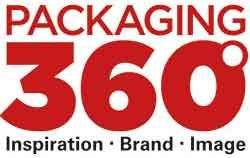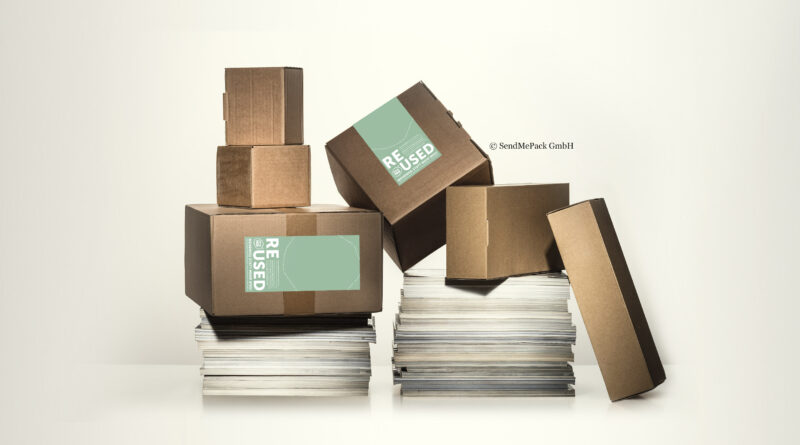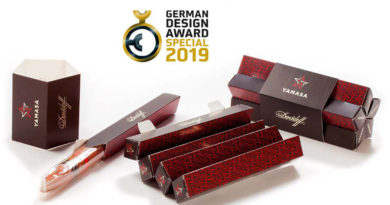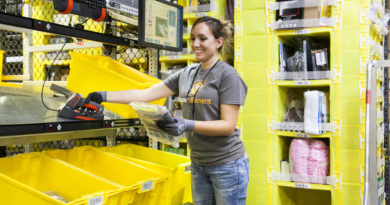E-Commerce Success Story Prevails
FACHPACK will be held under the slogan“Transition In Packaging“, which describes the changes currently taking place in the industry. These are also characterized by increasing e-commerce. The range of shipping materials and packaging for online trade is also growing. Sustainable and digital solutions are the trend.
It doesn’t get much smaller than this: contact lenses are among the goods that people like to order online. The product is always the same, but the shipping packaging is not. Sometimes the monthly package arrives in a mailing bag that fits neatly into the mailbox. Sometimes, however, the parcel delivery person brings the lenses in a large package with plenty of plastic filling material. Consumers who order cosmetics online also have the same experience from time to time. Oversized packaging has to do with a dilemma in logistics, admits Alien Mulyk, packaging and returns expert at the German E-Commerce Association (bevh). Packaging that is too large annoys customers and ends up spoiling business, concludes a recent survey by packaging manufacturer DS Smith. Looking at the overall statistics, however, such annoyances currently have no impact. According to statistics from the bevh, only two percent of German infrequent buyers say they avoid e-commerce because of delivery quality – the EU average is 9 percent.
Sales still at a high level
The fact is that online retailing continues to boom. In 2021, bevh determined that an average of 43.6 percent have shopped online within the last seven days (2017: 38 percent). Of these, almost 41 percent even ordered goods online more than once during this period. Although the consumer mood has cooled since the start of the war in Ukraine and has also left its mark on e-commerce at the halfway point of the year, sales are still at a high level: total accumulated sales in the 1st half of 2022 are 1.3 percent below the half-yearly sales of 2021, but with 32.9 percent growth still substantially higher than the figure for the 1st half of 2019. In addition to efficient logistics and digital technology, the key driver of the e-commerce success story is the packaging that enables products to be transported safely. In more than 90 percent of cases, this involves packaging made of corrugated board. It protects the product and presents the brand or the retailer.
However, the variety of packaging and packaging aids is growing all the time. The list of options is long: shipping cartons with self-adhesive strips or tear-open perforations, folding boxes, and postage-optimized postal packaging are among them. For padding and fillers, there are new bio-based materials that replace plastic. The reusable systems much discussed in public will remain a niche in e-commerce in the medium term. This is the conclusion reached by IFH Cologne in a study commissioned by the Association of the Corrugated Board Industry (VDW). What is interesting here is that particularly consumers with a pronounced environmental awareness were not convinced by reusable concepts. According to the IFH survey, 91 percent perceive packaging made of cardboard or carton as more natural compared to plastic packaging. 55 percent of respondents would prefer corrugated packaging when ordering online and only 22 would prefer a reusable solution. The bevh is also still skeptical about reusable shipping packaging.
Reusable for packaging
„The idea of reusable packaging is clever, but not new. It has only worked moderately in the past because consumers have to go along and actually return the shipping bags,“ said Frank Düssler, public relations manager for bevh. It was also not enough to just develop the shipping packaging, he said. You would also have to create an infrastructure so that the packages are returned. However, since sustainability had a different status today among customers as well as retailers, and logisticians, the reusable idea would give new impetus. „The very best shipping packaging is no shipping packaging at all. The ideal solution would, therefore, be if product packaging could also serve as shipping packaging in the future. Some retailers are in talks with manufacturers about this.“
An innovative idea for reusable packaging came from Berlin-based Michelle Reed and Philip Bondulich, who founded the start-up SendMePack and successfully found prominent investors such as Carsten Maschmeyer on the TV show „Höhle der Löwen (Lion’s Den).“ The two young entrepreneurs have developed a reusable system for existing disposable cartons that would otherwise have ended up in waste paper. The background: in Germany, more than four billion parcels are sent every year – and the vast majority of them are subsequently thrown away.
The start-up works with major logistics partners to recycle intact shipping packaging, which they then offer as a shipping alternative for businesses under the SendMePack brand. The start-up literally picks up the outer packaging from logistics providers that would otherwise end up in the trash and processes it. From there, they go to online stores and mail-order companies.
Customers include Outfittery, 1. FC Nuremberg, or Avocado Store, explains marketing manager Lena Rink when asked. The company, which now has ten employees, explains that it calculates the CO2 savings for customers that they achieve with the help of the alternative shipping boxes. „At the beginning, we calculated an average value of 260 grams of CO2 that a SendMePack saves. In the meantime, however, we can determine this value much more precisely, because we have teamed up with one of the leading corrugated cardboard manufacturers. In this exchange, we also received confirmation that the weight of a box is roughly equivalent to the CO2 emissions generated during production. So, we can now be much more precise about how much each online store saves in CO2 by switching to SendMePack,“ says Rink.
Each of the start-up’s refurbished boxes receives a sticker with a QR code and its own name. Usingthe QR code, customers can see in which cities their package has already been and how much carbon dioxide has been saved by reusing it. Labeling is handled by B2B label printer etikett.de, which uses HP printing technology.
There are other systems as well: In the „Green Packaging“ pilot project, the Austrian Post Office is researching reusable and sustainable packaging solutions for parcel shipping. The drugstore chain dm, the Upper Austria University of Applied Sciences, and other retail companies are participating in the pilot project for reusable and sustainable shipping packaging for online retail. The reusable packaging is expected to „survive“ up to 100 shipping cycles.
The start-up „wir.kiste.kreis“ – one of the start-up exhibitors at FACHPACK, the joint stands of which are located in Hall 5 and are sponsored by the German Federal Ministry of Economics and Climate Protection – also aims to help achieve greater sustainability through new reusable packaging systems. „If all 4.51 billion shipments were sent with our crate and reused only a second time, Germany could save 329,531 tons of CO2e (carbon dioxide equivalent) annually. That’s roughly equivalent to the amount that 14,200,000 spruce trees convert in one year,“ explain start-up entrepreneurs Rudolf Siegle and Bastian Gegenheimer. CO2e is a unit of measurement that aims to make the effect of all greenhouse gases on the climate comparable.
Sustainability as a megatrend
Whether with or without a reusable system, the megatrend towards sustainability is here to stay – even in online retailing. Manufacturers, retailers, and consumers expect a good carbon footprint. Using digital printing, packaging can be imprinted with QR codes during production, for example. Efficient labeling enables precise control of logistics. It can also eliminate the need for label stickers.
Personalization
Printing on the shipping carton – or secondary packaging – exemplifies the trend toward personalization, which can show its strength in e-commerce. Where product recommendations are tailored to the buyer thanks to artificial intelligence, the package with the goods must be too. The packaging becomes unique and appears to be tailor-made for the customer. Confectionery manufacturers, for instance, have a wide range of personalized packaging to choose from in their online stores. For example, online customers can have their individual box of chocolates printed with a photo or name in the store and wrapped in gift paper as well.
For this reason, retailers like to use unprinted blanks on the packaging line, which are then printed on inline. The flexibility required by retailers in e-commerce is, therefore, also being transferred to manufacturers of packaging machines and to print shops. With particularly short changeover times, modular machine concepts or even robotics in production, the industry has long been prepared for this trend.
by Anna Ntemiris




